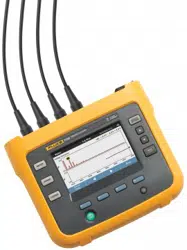Loading ...
Loading ...
Loading ...

1736/1738
Users Manual
34
Wired Connection
Configure the Auxiliary input to show the readings for the attached
sensor. In addition to the default setting of ±10 V, up to five custom
sensors can be configured and selected for the Auxiliary input
channels.
To configure custom sensors:
1.
Select one of the five custom sensors.
2.
When the sensor has not been configured, push (Edit) to
access the configuration screen.
3.
Configure name, sensor type, unit, gain and offset. Confirm the
settings with
(Back).
4.
Select the sensor for the Auxiliary input with .
The configuration includes name, sensor type, unit, gain and offset:
•
Change the Name from Custom1...5 to any clear identification of
the sensor with up to 16 characters.
•
Select the Sensor Type from a list that includes 0-1 V, 0-10 V,
4-20 mA, and other.
Use the 0-1 V and 0-10 V settings for sensors with a voltage
output directly connected to the Aux input. The commonly
used sensors that provide an output current of 4-20 mA can be
used. In this case, an external resistor parallel to the Aux input
(+) and Aux input (-) is required. A resistor value of 50 Ω is
recommended. Resistor values >500 Ω are not supported. The
resistor value is entered in the sensor configuration dialog and
is a convenient method for configuration of the sensor
measurement range.
•
Use up to 8 characters to configure the measurement Unit of the
parameter.
•
Configure the gain and offset. For sensor types 0-1 V, 0-10 V, and
4-20 mA, the Gain and Offset are automatically calculated with
the measurement range of the sensor. In the Minimum field, enter
the measurement value that the sensor supplies on the output, 0 V
for 0-1 V and 0-10 V sensors or 4 mA for 4-20 mA sensors. In the
Maximum field, enter the measurement value when the sensor
supplies 1 V for 1 V sensors, 10 V for 10 V sensors, or 20 mA for
20 mA sensors.
For all other sensors types, use Other. For this sensor type use a gain
and offset.
Example 1:
Temperature sensor ABC123
Measurement range: -30 °C to 70 °C
Output: 0-10 V
The configuration for this sensor looks like this:
- Name: Change the name from Custom1 to ABC123 (°C)
- Sensor Type: Select 0-10 V
- Unit: Change Unit1 to °C
- Minimum: Enter -30
- Maximum: Enter 70
w ww. . com
information@itm.com1.800.561.8187
1.888.610.7664 sales@GlobalTestSupply.com
Fluke-Direct.com
Loading ...
Loading ...
Loading ...
